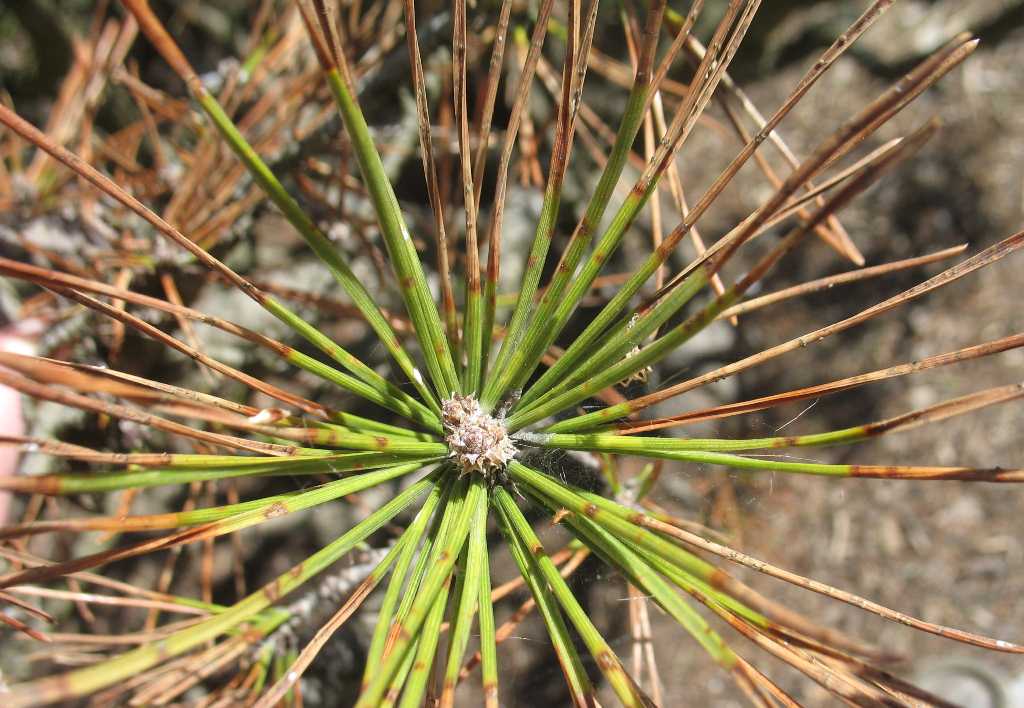

They are hyaline, oblong - cuneate, unequally two-celled, and 15-19 x 3.5-4.5 microns, with two prominent oil drops in each cell (fig. Ascospores are produced in pseudothecia embedded in dead leaf tissue. These spores are cylindrical, curved, 1-4 septate, olive green to brown, and 19-35 x 3.5-4 microns (fig. Conidia are exuded in sticky masses up to 1mm long that split the epidermis of the leaf. Conidia are produced in acervuli, which appear on lesions as small black dots visible to the naked eye (fig. Two types of fruiting bodies are produced. When this happens, entire beds may appear scorched (fig. The fungus can also infect the cut ends of pruned longleaf pine seedlings. Infected needles have three distinct zones: a green basal portion, a mottled middle portion, and a dead apical portion (fig. Needles with multiple lesions appear mottIed. Spots coalesce, and the needle tissue dies beyond and between groups of spots. Look for small, grayish-green spots, which become a straw-yellow color and then light brown with chestnut-brown margins (fig. Distribution of brown spot.Īlthough lesions may develop on secondary needles at any time, they most commonly appear from May to October. Infected seedlings are seldom killed, but severe defoliation reduces vigor, which, in turn, may result in poor survival and growth following outplanting.įigure 1-1. It has also been reported on pines in plantations in nine additional States (fig.1-1). The fungus also infects seedlings of slash, loblolly, and white pines in nurseries within or slightly beyond this area.īrown spot is found in nurseries in nine Southern States. Scirrhia acicola), is common on longleaf pine seedlings within the natural range of longleaf pine, that is, within the Coastal Plain from North Carolina to Texas. 680, 184 pp.īrown spot needle blight, caused by the fungus Mycosphaerella dearnessii (syn. USDA Forest Service, Agriculture Handbook No. Kais - Principal Plant Pathologist (retired), Southern Forest Experiment Station, USDA Forest Service, Gulfport, MS.Ĭordell C.E., Anderson R.L., Hoffard W.H., Landis T.D., Smith R.S.


 0 kommentar(er)
0 kommentar(er)
